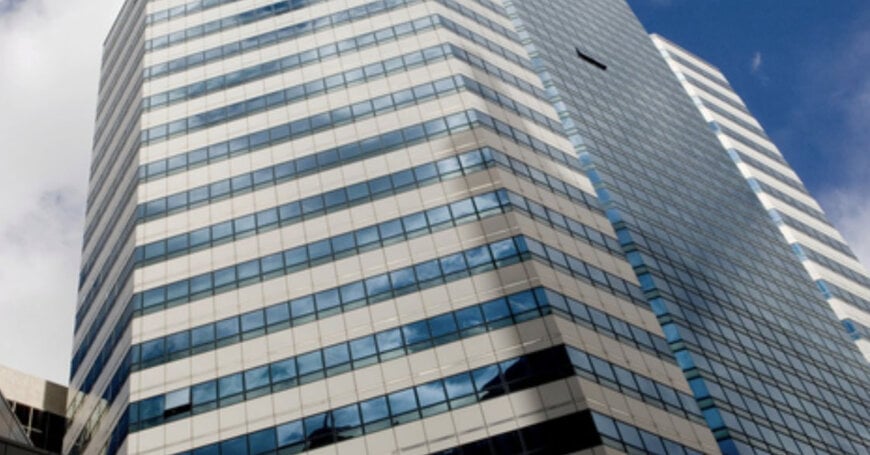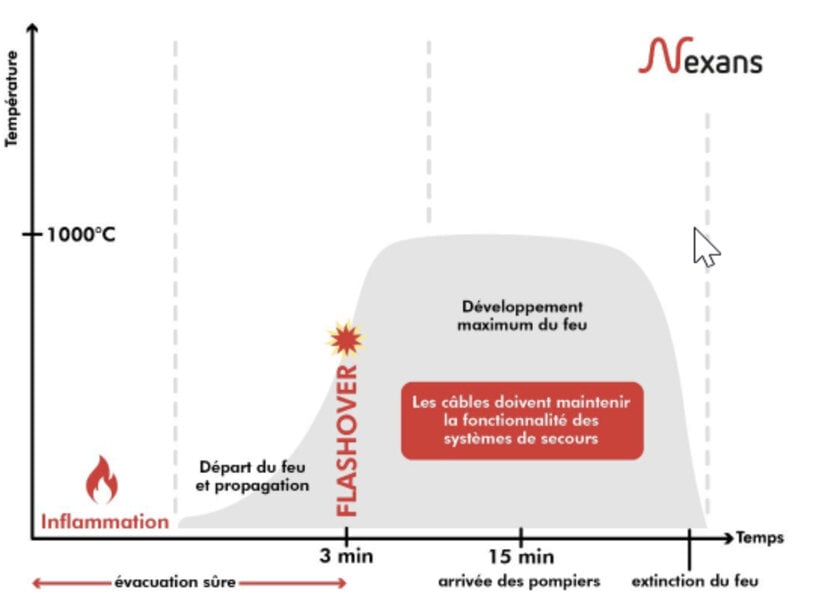www.industryemea.com
23
'25
Written on Modified on
How do electrical cables help prevent fires?
Nexans develops high-performance, safe cables that meet the requirements of the Construction Products Regulation (CPR), enhancing fire safety and energy efficiency in modern buildings.
www.nexans.com

Electrical cables are ubiquitous products found in homes and buildings. It is commonly estimated that for every 100 m² of office space, between 200 and 300 kg of cables are installed. They ensure the transmission of energy or data from the point of production to the end user, contributing to our everyday comfort.
In recent years, particular attention has been given to improving their fire-safety performance. This is partly due to the evolution of European regulations and the implementation of the Construction Products Regulation (CPR). The CPR requires that the fire performance of products permanently installed in buildings must be characterized. Governments are then responsible for defining the minimum performance levels required depending on the type of installation and associated risks. Electrical systems must therefore be adapted accordingly.
Limited Fire Propagation
Because cables are present throughout buildings and run continuously along their structures, they can act as a major vector for fire propagation. Made of combustible materials along their entire length, they can carry flames from one floor to another or spread them horizontally from one room to another. Unfortunately, this propagation limits the ability of occupants to evacuate and firefighters to intervene, while also causing significant material damage.
Selecting the right level of product performance during installation is therefore crucial. A high-quality fire-retardant cable increases the available evacuation time and facilitates emergency response.
French regulations are now evolving to address this aspect. The decree of 17 May 2024 amended several provisions of the fire-safety regulations for public-access buildings (ERP) and high-rise buildings (IGH), originally set by the decrees of 25 June 1980 and 30 December 2011.
As a result, starting end of May 2025, any building permit or work authorization filed for an ERP or IGH will require the installation of Cca-s2,d2,a2 cables. Nexans FR-N1 X6G3 PROTECT cables will fully comply with these requirements for power applications.
Because cables are often installed overhead, it is essential that they do not produce, or produce very few, burning droplets or particles that could fall on people evacuating or on firefighters during intervention. This helps prevent secondary ignition points, which accelerate fire spread within the building. Cables with a d0 or d1 rating should therefore be preferred. This performance level is indicated in their Euroclass classification.
Fire-resistant cables, meanwhile, are not yet included in the Euroclass system but are expected to be covered by the CPR soon. Currently, their C1 classification under NF C 32-070 indicates that they do not propagate fire.
Less Smoke
The new generation of fire-safety cables is designed to limit smoke emissions — the number-one risk identified by firefighters. Smoke is responsible for at least 80% of fire-related deaths in France. For occupants, smoke quickly becomes an impenetrable wall, preventing safe evacuation. Disoriented and deprived of visibility, they can no longer locate emergency exits.
Next-generation cables such as Nexans FR-N1X6G3 offer ten times greater visibility than conventional PVC cables — up to 50 meters in an evacuation corridor. This largely exceeds the 10-meter visibility threshold recommended for safe evacuation.
Another critical phenomenon to consider is the flashover, or generalized combustion, which typically occurs three minutes after ignition. At this stage, all materials in the environment ignite simultaneously, generating dense smoke that spreads through the building much faster than flames. To reduce this risk, it is essential to select cables with s1 or s2 ratings, ensuring very low smoke emissions and maintaining the visibility necessary for evacuation.

Smoke can also be corrosive, drastically reducing the chances of safe evacuation. Because of its acidic nature, it irritates the eyes, lungs, and respiratory tract, limiting both breathing and visibility. It also damages property by attacking electrical systems and even the structural elements of the building. It is therefore preferable to select cables with an a1 or, at minimum, a2 rating. Smoke also has short-, medium-, and long-term health effects due to its toxicity. Once again, cables with at least s2,a2 classification should be prioritized.
Fire Resistance
Fire resistance is another crucial performance factor for fire safety in buildings. Fire-resistant cables ensure one key function: maintaining circuit integrity even under extreme conditions. In France, the CR1 category is a benchmark of excellence in this area. It guarantees electrical integrity for at least 65 minutes, even when the fire is fully developed and temperatures approach 1,000°C.
Fire-resistant cables are used to connect fire safety system (SSI) components such as smoke detectors. They ensure that signals are transmitted to alarms, smoke extractors, and emergency lighting systems, all of which are essential to increase the chances of safe evacuation. The faster the evacuation, the fewer the casualties. Effective fire safety systems also allow firefighters to intervene quickly and efficiently, reducing material damage.
The importance of coordination between equipment and prevention
As electricians, you are responsible for ensuring compliant installations. Cables can contribute to people’s safety if a few key principles are followed:
- Ensure that all electrical installations meet standards and are in good condition.
- Promote preventive maintenance and encourage building owners (residential, ERP, IGH, ERT) to bring their installations up to code and have them inspected regularly.
- Receive proper training to understand which cables to use and how to install them correctly.
- Use the right cables in the right locations, respecting regulations and selecting optimal fire-safety performance.
- For fire safety systems (SSI), make sure connections and installations are properly executed to guarantee reliable signal transmission through fire-detection and alarm devices.
- Ensure fire safety systems are in place to facilitate evacuation and help firefighters quickly locate the fire’s origin.

